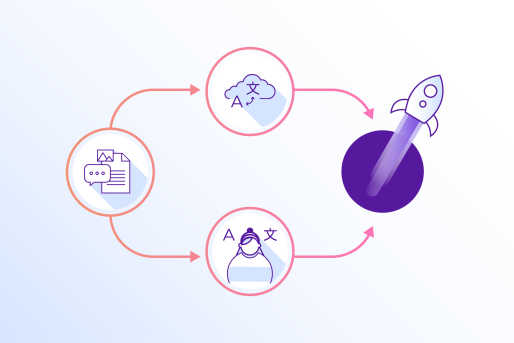What Is a Website Translation Platform?
A website translation platform — also known as a translation management platform — is designed to streamline the translation and localization of online content. It’s an all-in-one approach to managing everything related to the translation process, from brand assets and your translation memory to workflows and communication with the linguists translating your content.
Ultimately, these platforms leverage technology to make the translation process:
- Less confusing
- Less reliant on manual labor
- Less time-consuming
As a result, translation quality increases while the time to market and translation costs decrease.
Why Do I Need a Website Translation Platform?
Having a well-designed, engaging website is crucial for businesses looking to establish credibility and engage with their audiences. A website, after all, tells the world who you are and sets the tone for your interactions with your customers. So it’s no wonder why businesses spend a lot of time cultivating their brand voice and style.
For businesses with a multicultural, multilingual audience, a website translation platform makes it possible to replicate the thought and care put into the original website’s content at scale. By keeping content organized and all collaborative tools in one place, the translation process becomes streamlined. That sets the translators up for success and gives businesses the best possible chance to connect with new markets — even if they don’t speak their audience’s native tongue.
The Traditional Translation Workflow: Ripe for Innovation
For many businesses and translators alike, the traditional translation workflow inspires dread, especially when dealing with online content. It’s tedious and time-consuming, and the end product is often subpar, resulting in a middling debut in a new market. Or worse yet, egregious errors may be identified only after significant damage has been done.
This traditional, error-prone way of handling translations involves the following:
- You manually export or copy and paste strings from your website’s CMS to a spreadsheet or plain text document.
- You email that spreadsheet or document to your language service provider (LSP), who then places the work with translators.
- The translators try their best to translate your content but must work without context. That increases the risk that the translations are not as accurate, consistent, or appropriate as they could or should be.
- Questions are emailed haphazardly — also out of context. They may not even reach you: the LSP may try to handle those to cut down on back and forth and meet your deadline.
- The translated file is delivered, and you must manually enter those translations back into your CMS, hoping that you do so correctly.
The Online-First Approach to Translation
An online translation platform, in contrast, reduces or eliminates many of the manual processes typical of the traditional approach to translation. Instead:
- You can connect your content repositories with your translation management platform and automatically send strings for translation.
- Linguistic assets — your translation memory, glossaries, and style guides — are in one place. Updating them is simple, and linguists always have access to the materials.
- The platform is integrated with a computer-assisted translation (CAT) tool, which means your translators can access visual context and use automated quality checks.
- Communication occurs within the platform — and long email threads are a thing of the past.
Gone are the hours spent copying and pasting into unwieldy documents and spreadsheets, keeping track of emails, and doing other manual work. In fact, over 50% of such work is eliminated when businesses switch to an online website translation platform.
Just as importantly, gone too is much of the uncertainty around the quality of the translations. The risk of an error-filled deliverable is lower, and any errors that do slip through can be caught and fixed quickly — which means businesses can expand into new markets with confidence.
How Do I Choose a Website Translation Platform?
When you are choosing a translation platform for your website and other translation needs, keep these points in mind:
- What kinds of integrations does the translation platform offer?
- Is it cloud-based, which ensures your work is protected and can be accessed by all key stakeholders?
- What level of customer support does the platform offer — not only when it comes to the integration process but also during the translation process?
Website translation helps you communicate who you are to a new audience. It’s important to choose an online translation platform that’s dedicated to simplifying the process and helping your message shine through. Smartling is a provider of both software services and language services that enables you to continuously deploy multilingual content, everywhere. Book a meeting with us to learn more!






